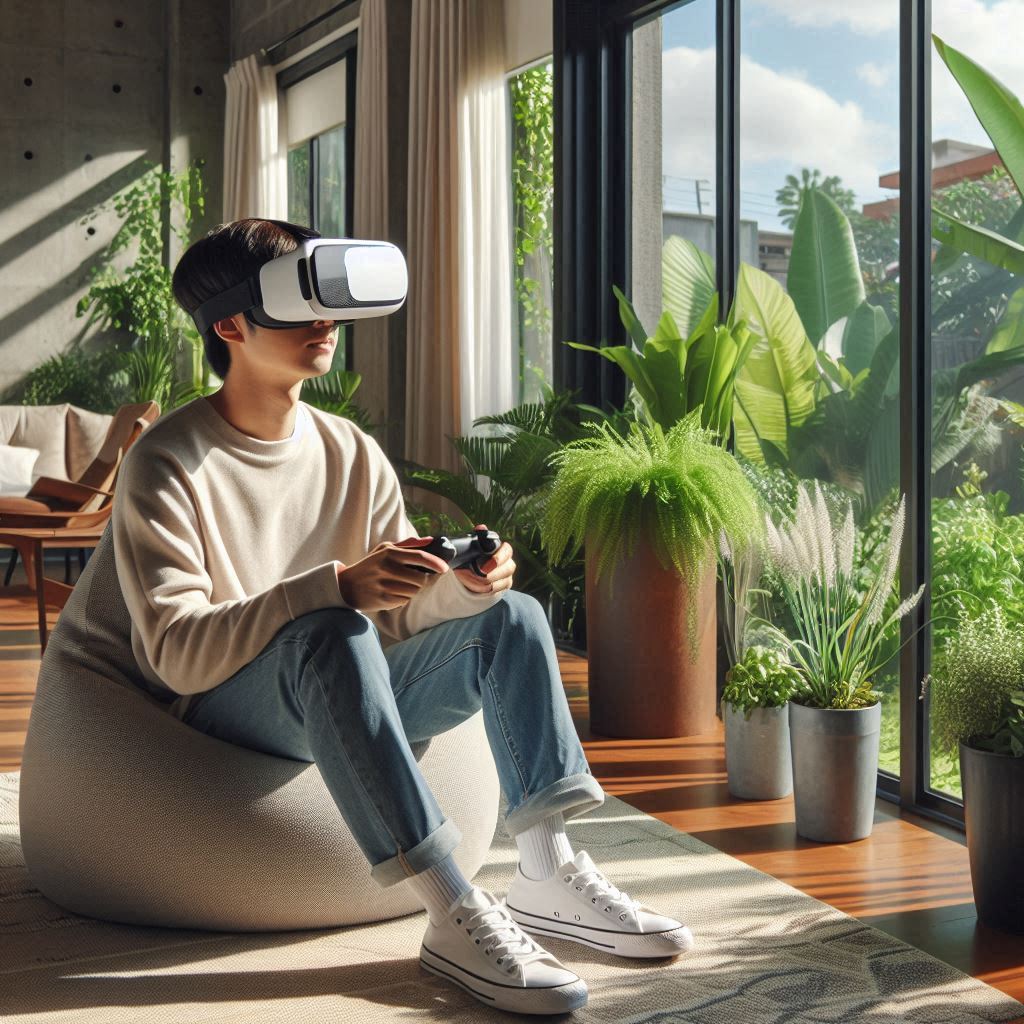Introduction
Explanation of the increasing prevalence of technology in daily life
In today’s world, technology permeates every aspect of our lives.
We constantly check our phones, scroll through social media, and rely on gadgets for daily tasks.
The average adult spends several hours a day glued to screens.
This surge in digital engagement raises concerns about its impact on our well-being.
Brief overview of what digital detox means
Digital detox refers to a period of intentional disconnection from technology.
During this detox, individuals consciously limit their device usage.
This practice allows people to reclaim their time and focus on real-life interactions.
A digital detox encourages mindfulness and self-reflection.
Importance of addressing technology overload in modern society
Addressing technology overload is crucial in our fast-paced society.
Overexposure to screens leads to increased stress and anxiety.
Many experience feelings of isolation despite being “connected.” A digital detox cultivates better mental clarity and personal connections.
By stepping back from technology, we can rediscover meaningful experiences.
Moreover, technology induces distractions that fragment our attention.
Constant notifications disrupt our concentration and hinder productivity.
Without a detox, we risk becoming overwhelmed and burned out.
Reclaiming our lives involves setting boundaries with tech usage.
In summary, as technology becomes ever more pervasive, we must prioritize our mental health.
By embracing a digital detox, we create space for genuine human connections.
We empower ourselves to live purposefully and mindfully.
Understanding Technology Overload
Technology has become an integral part of our daily lives.
It connects us, entertains us, and informs us.
However, excessive technology use can lead to a condition known as technology overload.
This phenomenon describes the overwhelming sensation many people feel from constant digital engagement.
Technology overload can significantly affect mental health, productivity, and overall well-being.
Definition of Technology Overload and Its Impact on Mental Health
Technology overload refers to the feeling of being overwhelmed due to excessive exposure to devices and digital content.
The constant barrage of notifications, social media updates, and emails can create an environment of anxiety.
As individuals engage with technology more frequently, they often feel an increased need to be responsive and present online.
This pressure can lead to chronic stress and contribute to mental health disorders.
The impacts of technology overload on mental health include:
- Anxiety: Individuals may experience heightened anxiety because they feel the need to keep up with constant digital interactions.
- Depression: Comparing oneself to idealized portrayals on social media can lead to feelings of inadequacy and depression.
- Stress: The inability to disconnect can create overwhelming stress that affects both personal and professional lives.
- Sleep Issues: Excessive screen time, especially before bed, disrupts sleep patterns, ultimately affecting mental health.
Signs and Symptoms of Technology Overload
Recognizing the signs of technology overload is crucial for reclaiming your life from this condition. Common symptoms include:
- Anxiety: Persistent feelings of worry related to device notifications or missed messages.
- Irritability: Increased frustration when accessing devices or experiencing lag in connectivity.
- Decreased Productivity: An inability to focus on tasks due to constant distractions from technology.
- Fatigue: Mental fatigue from excess screen time can deplete energy levels significantly.
- Comparison: Heightened feelings of jealousy or dissatisfaction stemming from comparisons to others online.
If you recognize these signs in your daily life, it’s time to consider steps for a digital detox.
Addressing technology overload will allow for a healthier relationship with your devices.
Statistics on Screen Time and Its Implications on Personal Well-being
The statistics related to screen time continue to paint a concerning picture.
Studies indicate that:
- Adults spend an average of more than 11 hours each day interacting with digital media.
- Children aged 8 to 12 years spend about 4-6 hours daily on screens, with teens averaging closer to 9 hours.
- Over 50% of individuals report feeling addicted to their devices, indicating a reliance that impacts daily life.
These figures illustrate how deeply ingrained technology has become in our lives.
Put Your Tech Company on the Map!
Get featured on Nicholas Idoko’s Blog for just $50. Showcase your business, boost credibility, and reach a growing audience eager for tech solutions.
Publish NowAs the world grows more digital, so do the challenges associated with its use.
Many individuals struggle to manage their screen time and often feel trapped by their digital demands.
The implications on personal well-being are profound.
As screen time increases, instances of mental health issues have also surged.
Research shows that those who regularly engage in extensive screen time report higher levels of anxiety and depression.
Moreover, the isolation created by excessive social media interaction often leaves individuals feeling alone, despite being “connected.”
Understanding the extent of technology overload empowers individuals to make informed decisions.
Awareness of its definition, signs, and potential ramifications is the first step toward reclaiming one’s life from digital dependence.
Furthermore, once people recognize their unhealthy habits, they can begin to implement strategies to reduce technology usage.
Digital detoxing offers an essential approach for promoting mental and emotional well-being.
In fact, technology overload has implications that extend beyond mere inconvenience.
It manifests through anxiety, irritability, and decreased productivity.
Furthermore, alarming statistics indicate that screen time is a significant burden many individuals face.
Taking stock of your relationship with technology can lead to a more balanced and fulfilling life, free from the chains of excessive digital engagement.
Read: Smart Wearables: Revolutionizing Personal Safety in Everyday Life
The Benefits of a Digital Detox
Improvement in Mental Clarity and Focus
One of the most significant benefits of a digital detox is the immediate improvement in mental clarity.
When you step away from screens, your mind stops racing.
This helps reduce cognitive overload. Many people find it hard to concentrate on tasks.
Technology bombards us with notifications, advertisements, and updates.
When you unplug, your brain can breathe.
With fewer distractions, you can focus better on essential tasks.
This leads to a sharper, more agile mind. You can think critically and creatively again.
Many experience a newfound ability to engage in deep work.
Here are some specific ways you may notice an improvement in mental clarity:
- You’ll experience fewer moments of mental fatigue.
- Decision-making becomes quicker and easier.
- Your ability to concentrate on a single task improves significantly.
- A feeling of greater overall mental peace becomes apparent.
Enhanced Personal Relationships and Social Interactions
Taking a break from technology fosters genuine connections.
Real relationships thrive on direct communication, not screens.
A digital detox allows you to reconnect with friends and family.
You become present, engaged in conversations.
This open, honest interaction builds stronger bonds.
Moreover, you may notice an increase in empathy.
When you focus on people face-to-face, you understand their emotions better.
This leads to deeper connections and more meaningful interactions.
The benefits manifest in several ways:
- Conversations become more meaningful and engaging.
- You can share experiences without distractions.
- Support networks strengthen through authentic interaction.
- Conflict resolution becomes easier without the complicating factors of technology.
Increased Productivity and Better Time Management
Digital detoxing transforms your productivity levels.
Without constant notifications, you reclaim precious time.
Put Your Tech Company on the Map!
Get featured on Nicholas Idoko’s Blog for just $50. Showcase your business, boost credibility, and reach a growing audience eager for tech solutions.
Publish NowTime spent mindlessly scrolling disappears.
This allows you to allocate your energy to priority tasks.
Many people report feeling more accomplished at the end of the day.
When you limit digital distractions, working becomes more efficient.
You can tackle projects with greater intensity. Focused work leads to higher quality results.
This improved productivity also contributes to better time management.
Here’s how a digital detox enhances productivity and time management:
- You can create and adhere to structured schedules more easily.
- Tasks take less time to complete without distractions.
- Project completion rates improve significantly.
- You can prioritize high-impact tasks over low-value busywork.
Improved Physical Health
Your physical health sees remarkable benefits from a digital detox.
Spending less time on screens reduces eye strain.
Many struggle with screen-induced headaches.
Declaring a digital detox can eliminate many of these symptoms.
Increased screen time often disrupts sleep patterns.
A digital detox encourages healthier bedtime routines.
Dimming screens before bed leads to improved sleep quality.
Quality sleep profoundly impacts overall health.
Here are specific health benefits you might experience:
- Eye strain decreases, leading to fewer headaches.
- Better sleep patterns contribute to overall well-being.
- Engaging in physical activity increases because you spend less time on your devices.
- Your energy levels could significantly rise due to better sleep and activity.
Overall, embracing a digital detox offers numerous benefits.
You can experience improvements in mental clarity and focus.
You’ll notice enhanced personal relationships and social interactions.
Additionally, your productivity and time management skills improve tremendously.
Most importantly, your physical health benefits significantly.
In a world filled with digital noise, find the silence. Rediscover the beauty of human connections.
Embrace your unaltered mind. Your life will transform in remarkable ways.
Take the plunge into a digital detox today. Your future self will thank you.
Read: Digital Minimalism: Balancing Tech Use for a Healthier Daily Life
Creating a Digital Detox Plan
Assessing Current Technology Usage
Begin your digital detox journey by assessing your current technology usage.
This step is crucial for understanding your digital habits.
Follow these steps to gain valuable insights:
- Track Your Screen Time: Use apps that monitor your screen time. They provide detailed reports on daily and weekly usage.
- Identify Usage Patterns: Review your screen time data. Determine when you use technology most frequently and for what purposes.
- Reflect on Your Feelings: After each use, note how you feel. Are you relaxed, stressed, or distracted? This reflection helps highlight unhealthy habits.
- Assess Your Devices: List all devices you regularly use. Include smartphones, tablets, computers, and smart TVs.
- Evaluate App Usage: Identify the apps that consume most of your time. Create a separate list of social media, games, and productivity apps.
Through this assessment, you will gain clarity on your relationship with technology.
Understanding your habits will guide you in setting appropriate detox goals.
Moreover, this awareness pushes you to recognize areas needing change.
Once you evaluate your current usage, you can make informed decisions moving forward.
Setting Realistic Goals for Digital Detox
Once you understand your technology usage, set realistic goals for your digital detox plan.
Goals provide direction and help you stay committed.
Consider smart goal-setting techniques:
Put Your Tech Company on the Map!
Get featured on Nicholas Idoko’s Blog for just $50. Showcase your business, boost credibility, and reach a growing audience eager for tech solutions.
Publish Now- Specific: Define clear, specific goals. For example, aim to reduce social media usage by two hours weekly.
- Measurable: Make goals quantifiable. Track daily or weekly screen time to monitor progress.
- Achievable: Set achievable goals based on your assessment. Gradually decrease usage instead of quitting cold turkey.
- Relevant: Ensure that goals align with your overall wellness objectives. Focus on improving your mental health and productivity.
- Time-Bound: Establish timelines for each goal. Decide to complete your detox within a particular time frame.
Setting duration is imperative. Consider starting with a short digital detox period, like one week.
You can extend your detox duration based on your comfort level.
Identify specific devices to limit.
For instance, choose to limit smartphone use while keeping your laptop accessible for work purposes.
This approach creates balance rather than an absolute ban.
Gradually Reducing Screen Time
Reducing screen time can feel challenging, but gradual adjustments yield long-lasting results.
Implement these strategies to help you minimize technology use effectively:
- Create Tech-Free Zones: Designate areas in your home where technology is not allowed. Consider making the kitchen or bedroom tech-free.
- Establish Tech-Free Times: Set specific periods each day when you avoid screens. During meals or before bed can be effective times.
- Limit Notifications: Turn off non-essential notifications. Less distraction allows you to engage more with your surroundings.
- Pursue Alternatives: Find alternative activities to replace screen time. Engage in hobbies such as reading, painting, or exercising.
- Use Technology Mindfully: Before reaching for your device, ask yourself: “Is this necessary right now?” Prioritize conscious usage.
- Schedule Offline Activities: Block time on your calendar for offline activities. Participate in nature walks, cooking classes, or social gatherings.
These methods help you reclaim your time and energy.
Establishing boundaries prevents technology from monopolizing your life.
Reducing screen time should feel like a positive change, not a punishment.
Enjoy the benefits of reconnecting with the world around you.
You will likely find increased focus and creativity.
Creating a digital detox plan involves careful assessment and goal-setting.
Start by tracking your usage and reflecting on your habits.
From there, establish realistic goals to guide your detox journey.
Finally, gradually reduce your screen time through practical strategies.
Embracing a digital detox allows you to reclaim control over your life.
Enjoy the freedom of a balanced relationship with technology.
By taking these steps, you will cultivate a healthier lifestyle, reduce stress, and foster meaningful connections.
Read: AI-Driven Wellness: How Artificial Intelligence Enhances Mental Health

Effective Strategies for a Successful Detox
In today’s hyper-connected world, we often overlook the importance of unplugging.
Engaging in a digital detox allows us to disconnect from screens and reconnect with ourselves and our surroundings.
Here are effective strategies to navigate this journey.
Alternatives to Technology
Engaging in activities without screens can provide significant benefits.
Discovering hobbies and enjoying outdoor activities can enhance your mental health, creativity, and well-being.
Here are some alternatives to consider:
- Reading: Immerse yourself in a good book. Reading boosts imagination and reduces stress.
- Outdoor Activities: Embrace nature by hiking, biking, or taking long walks. Fresh air invigorates the mind.
- Creative Hobbies: Pursue painting, drawing, knitting, or crafting. These activities stimulate creativity and mindfulness.
- Exercise: Join a yoga class or participate in team sports. Physical activity enhances mood and provides immediate benefits.
- Gardening: Caring for plants connects you with nature. Gardening also offers physical exercise and a sense of accomplishment.
- Cooking and Baking: Experiment with new recipes or baking techniques. This activity promotes creativity and nourishes your body.
- Mindfulness Practices: Explore meditation and deep-breathing exercises. These practices help reduce anxiety and increase self-awareness.
By integrating these activities into your daily life, you cultivate a richer experience, free from the distractions of technology.
Making time for these alternatives nurtures the body and soul.
Setting Boundaries
To achieve a successful digital detox, establishing boundaries is crucial.
Setting clear guidelines regarding when and where to use devices helps maintain a healthy relationship with technology.
Here are practical tips:
- Designate Device-Free Zones: Create areas in your home where technology is prohibited, such as the dining room and bedroom. This encourages conscious communication and rest.
- Establish Device-Free Times: Allocate specific times during the day when you will power down your devices. Consider making breakfast, family dinners, or an hour before bed screen-free.
- Turn Off Notifications: Disable non-essential notifications to reduce distractions. This allows you to focus on more important tasks or interactions.
- Use Technology with Intention: Before reaching for your device, ask yourself why. This self-awareness can help you avoid mindless browsing or scrolling.
- Limit Social Media: Set specific times for checking social media. Instead of aimless scrolling, engage with content purposefully.
- Practice Digital Minimalism: Declutter your digital space by removing unused apps or subscriptions. Simplifying your digital life can lead to reduced stress.
- Create a Device Charging Station: Place your chargers in a designated spot outside of your bedroom. This encourages you to keep phones and tablets away during rest.
Implementing these boundaries equips you to regain control over your technology usage.
These simple steps create healthier habits that encourage more meaningful experiences.
Engaging Family and Friends
Embarking on a digital detox alone can be challenging.
By involving family and friends, you create a supportive network that fosters accountability and encouragement.
Put Your Tech Company on the Map!
Get featured on Nicholas Idoko’s Blog for just $50. Showcase your business, boost credibility, and reach a growing audience eager for tech solutions.
Publish NowHere’s how to engage loved ones:
- Share Your Intentions: Communicate your goal to your friends and family. Explain the reasons you want to disconnect and the benefits you hope to gain.
- Create a Group Challenge: Initiate a digital detox challenge with friends or family members. This shared experience fosters camaraderie and motivation.
- Set Up Regular Check-Ins: Establish weekly or monthly meetings to discuss progress, share insights, and celebrate achievements. This keeps everyone accountable.
- Plan Device-Free Gatherings: Organize family outings or get-togethers where everyone agrees to leave devices behind. This encourages genuine interactions and bonding.
- Support Each Other: Offer encouragement if someone struggles during the detox. A kind word or shared experience can reignite commitment.
- Share Non-Digital Activities: Encourage group activities that do not involve technology, such as board games, hiking, or cooking together.
- Document Your Journey: Keep a shared journal or digital album of your detox experiences. Reflecting on memories creates a stronger bond.
Building a supportive network enhances the detox experience.
Engaging others provides encouragement, motivation, and, most importantly, connection.
Reclaiming your life from technology overload is an empowering journey.
Through alternatives to technology, setting boundaries, and engaging loved ones, you can achieve a successful detox.
Start small, remain committed, and enjoy the rewards of a renewed connection to life beyond screens.
Your well-being thrives when you step back and embrace the world without distractions.
Read: AI Tools for Entrepreneurs: Streamlining Daily Life for Business Owners
Overcoming Challenges During Detox
Embarking on a digital detox can be a transformative journey.
However, this journey comes with its own set of challenges.
Understanding these challenges and preparing for them ensures success in reclaiming your life from technology overload.
Common Difficulties Encountered During the Detox
As you initiate your digital detox, you might face several common difficulties.
These challenges often test your commitment and resolve.
Acknowledging them is the first step toward overcoming them.
Below are some of the prevalent issues faced during a detox:
- Withdrawal Symptoms: You may experience feelings of anxiety or restlessness when disconnecting from technology.
- Fear of Missing Out (FOMO): The anxiety of missing important updates or events can be overwhelming.
- Lack of Structure: Without technology, you may find it challenging to fill your time effectively.
- Social Pressure: Friends or family may not support your detox, which can create additional stress.
- Reconnection Cravings: The urge to check notifications may lead to breaking your detox commitment.
Strategies for Managing Cravings for Technology
Feelings of craving technology often arise.
This sensation is entirely normal, especially at the beginning.
You can implement several strategies to combat these cravings effectively:
- Set Clear Boundaries: Define specific times for technology use. This allows you to enjoy it without overindulgence.
- Establish New Routines: Create fresh schedules that do not involve screens. Include activities such as reading, exercising, or cooking.
- Practice Mindfulness: Engage in mindfulness techniques like meditation or deep breathing. These practices help center your thoughts and reduce cravings.
- Respond with Alternatives: Instead of reaching for your phone, pick up a book or go for a walk. Distracting yourself helps decrease the urge.
- Create a Technology-Free Zone: Designate certain areas in your home that are free from devices. Spend time in these zones to reinforce your detox.
Techniques for Staying Committed to the Detox Plan
Staying committed to your detox plan requires both determination and strategy.
Here are effective techniques to help maintain your focus:
- Develop a Support System: Share your detox plans with friends or family members. Their encouragement can help keep you accountable.
- Document Your Journey: Keep a journal to track your experiences during the detox. Reflecting on your progress can motivate you to continue.
- Set Achievable Goals: Break down your detox into smaller, manageable goals. Achieving these can provide a sense of accomplishment.
- Reward Yourself: Plan small rewards for milestones reached. Treating yourself can help maintain motivation during difficult moments.
- Evaluate Your Progress: Regularly assess your feelings and behaviors. Adjust your detox plan if necessary to better suit your evolving needs.
Emotional and Mental Adjustments
The transition from technology-filled days to a digital detox requires emotional and mental adjustments.
Prepare yourself for these shifts:
- Accept the Discomfort: Recognize that initial discomfort is a part of the detox. Embrace the process as a necessary step toward growth.
- Revisit Old Hobbies: Re-engage with activities you enjoyed before screens dominated your time. Rediscovering these interests can alleviate cravings.
- Develop New Interests: Explore new hobbies or activities that pique your interest. This helps fill the void left by reduced technology use.
- Practice Gratitude: Keep a gratitude journal. Focusing on the positives in your life can ease feelings of loss associated with leaving technology.
- Seek Professional Support: Consider talking to a therapist or counselor if feelings of anxiety or restlessness persist. Professional guidance can provide additional coping strategies.
Reflection and Continual Growth
After experiencing a digital detox, reflect on your journey.
Consider what you learned and how you can apply it moving forward:
- Identify Triggers: Take note of situations that lead to technological cravings. Being aware helps you manage future urges.
- Assess Your Priorities: Think about the role of technology in your life. Determine what is essential versus what is superfluous.
- Maintain Balance: Strive for a healthier balance as you reintroduce technology. Create rules that promote moderation and mindfulness.
- Share Your Experiences: Talk about your detox with others. Sharing insights can facilitate discussions about healthier technology use.
- Plan for Future Detoxes: Consider setting future detox periods to maintain a healthy relationship with technology. Regular breaks can prevent overload.
Generally, while the journey of digital detox presents challenges, adopting strategies to tackle them eases the process.
Understanding and managing cravings, staying committed, and making thoughtful adjustments foster success.
Embrace this opportunity to reclaim your time, focus, and life from technology overload.
Maintaining Balance Post-Detox
After completing a digital detox, you stand at a crossroads.
You have learned valuable lessons about your relationship with technology.
However, the challenge now is to maintain this newfound clarity.
Establishing a sustainable relationship with technology remains essential to avoid falling back into old habits.
Importance of Establishing a Sustainable Relationship with Technology
Sustainability is key for a healthy relationship with technology.
Consider these reasons to maintain balance:
- Enhances Well-being: A balanced approach leads to better mental and emotional health.
- Increases Productivity: Mindful technology use can improve focus and efficiency.
- Fosters Real Connections: Face-to-face interactions nurture deeper relationships.
- Reduces Stress: Less screen time contributes to lower anxiety levels.
- Encourages Personal Growth: More free time allows for hobbies and self-improvement.
By understanding these benefits, you can see the value in maintaining balance.
Striving for a good equilibrium between online presence and offline experiences becomes crucial.
Put Your Tech Company on the Map!
Get featured on Nicholas Idoko’s Blog for just $50. Showcase your business, boost credibility, and reach a growing audience eager for tech solutions.
Publish NowGuidelines for Mindful Technology Use Moving Forward
Mindful technology use involves adopting specific guidelines.
Following these can help you stay grounded:
- Set Time Limits: Allocate specific times for social media and browsing.
- Turn Off Notifications: Disable non-essential notifications to reduce distractions.
- Designate Tech-Free Zones: Create areas in your home where technology is prohibited.
- Schedule Tech Breaks: Take regular breaks from screens to recharge.
- Practice Digital Minimalism: Keep only essential apps and programs on your devices.
- Engage in Offline Activities: Dedicate time to hobbies that don’t involve screens.
- Be Intentional: Think about your goals before engaging with technology.
These guidelines can help you become more intentional about your technology use.
Mindfulness can guide your actions whether you are working, socializing, or relaxing.
Tools and Apps that Promote Healthy Digital Habits
To support your mindful technology use, consider utilizing various tools and apps.
Here is a list of resources that can enhance your experience:
- Forest: This app helps you stay focused by growing virtual trees while you work.
- Moment: Track your screen time and set daily limits on usage.
- StayFocusd: A browser extension that blocks distracting websites.
- Freedom: Blocks websites and apps across all devices to minimize distractions.
- RescueTime: Analyzes your digital habits to help you understand where time is spent.
- Headspace: Offers guided meditation to help center your thoughts and reduce stress.
- Digital Wellbeing: A built-in feature on Android devices that monitors usage and encourages balance.
Each of these tools provides valuable assistance tailored to your needs.
Incorporating them into your daily life can lead to healthier habits.
Returning to a balanced relationship with technology after a digital detox is vital.
By understanding the importance of this balance, you can avoid slipping back into old habits.
Using guidelines for mindful technology consumption helps establish a supportive environment for your well-being.
Coupled with the right tools, you can reclaim your life from technology overload while enjoying its benefits.
Conclusion
Recap of the importance of reclaiming life from technology overload
In today’s fast-paced digital world, reclaiming your life from technology overload is essential.
Constant connectivity can overwhelm the mind and disrupt daily living.
Prioritizing a digital detox helps restore mental clarity and emotional balance.
You can enjoy genuine connections and engage fully in your surroundings.
It is crucial to remember that this journey is not just a one-time event.
Viewing digital detox as an ongoing process fosters lasting change.
Encouragement to view digital detox as a continual process rather than a one-time event
By adopting mindful usage, you create healthy boundaries with technology.
Regular check-ins can help you assess your relationship with devices.
Reflect on how technology influences your mood, productivity, and interactions.
Acknowledge the times you feel happiest or most stressed.
This awareness will become your guide in navigating the digital landscape.
Small, incremental changes yield powerful results over time.
Final thoughts on the long-term benefits of a balanced life with technology
Embrace the benefits of a life balanced with technology.
A thoughtful approach helps reduce stress and fosters creativity.
Simply unplugging can spark new hobbies or rekindle old passions.
Use this time to nurture your relationships, whether with family or friends.
Engaging in activities without screens enhances relationships and deepens connections.
As you integrate these insights into your life, notice improvements in well-being.
You may feel more energized, focused, and present.
This clarity reduces feelings of anxiety and overwhelm.
With each step you take toward balance, celebrate the small victories.
These moments remind you of the beauty beyond the screen.
Finally, commit to this journey of digital detox wholeheartedly.
Put Your Tech Company on the Map!
Get featured on Nicholas Idoko’s Blog for just $50. Showcase your business, boost credibility, and reach a growing audience eager for tech solutions.
Publish NowLet it become a lifestyle choice that prioritizes your health and happiness.
A balanced life offers long-term benefits that enhance your quality of life.
By reclaiming your time and attention, you embrace a future filled with purpose and fulfillment.
Before You Go…
Hey, thank you for reading this blog post to the end. I hope it was helpful. Let me tell you a little bit about Nicholas Idoko Technologies.
We help businesses and companies build an online presence by developing web, mobile, desktop, and blockchain applications.
We also help aspiring software developers and programmers learn the skills they need to have a successful career.
Take your first step to becoming a programming expert by joining our Learn To Code academy today!
Be sure to contact us if you need more information or have any questions! We are readily available.
[E-Books for Sale]
1,500 AI Applications for Next-Level Growth: Unleash the Potential for Wealth and Innovation
$5.38 • 1,500 AI Applications • 228 pages
Are you ready to tap into the power of Artificial Intelligence without the tech jargon and endless guesswork? This definitive e-book unlocks 1,500 real-world AI strategies that can help you.
See All 1,500 AI Applications of this E-Book
750 Lucrative Business Ideas: Your Ultimate Guide to Thriving in the U.S. Market
$49 • 750 Business Ideas • 109 pages
Unlock 750 profitable business ideas to transform your future. Discover the ultimate guide for aspiring entrepreneurs today!
See All 750 Business Ideas of this E-Book
500 Cutting-Edge Tech Startup Ideas for 2024 & 2025: Innovate, Create, Dominate
$19.99 • 500 Tech Startup Ideas • 62 pages
You will get inspired with 500 innovative tech startup ideas for 2024 and 2025, complete with concise descriptions to help you kickstart your entrepreneurial journey in AI, Blockchain, IoT, Fintech, and AR/VR.
We Design & Develop Websites, Android & iOS Apps
Looking to transform your digital presence? We specialize in creating stunning websites and powerful mobile apps for Android and iOS. Let us bring your vision to life with innovative, tailored solutions!
Get Started Today




